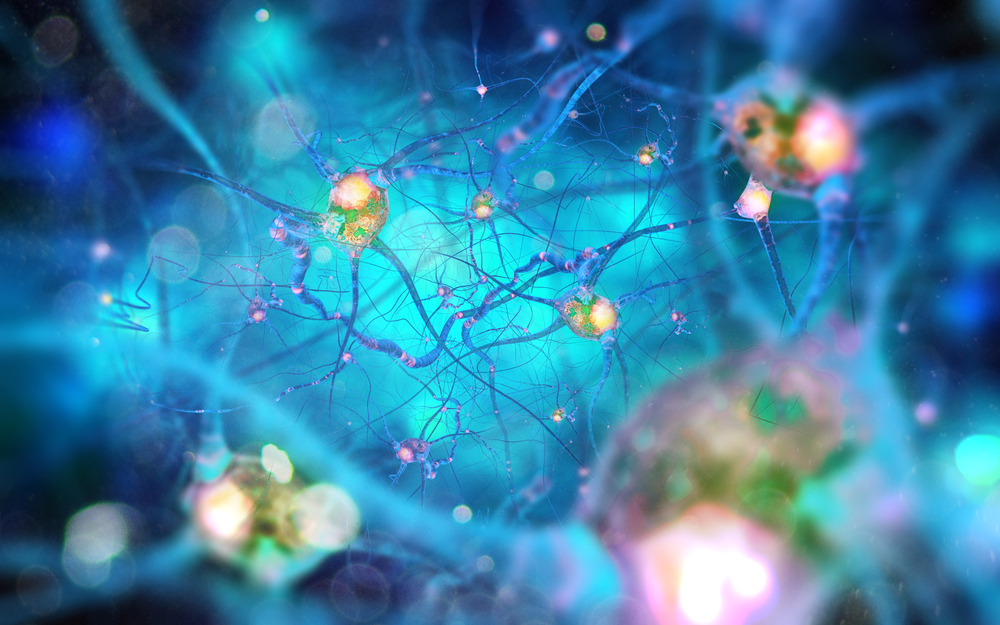Light-based DBS Method Can Alleviate Motor Symptoms of Parkinson’s, Animal Study Shows
Written by |

Andrii Vodolazhskyi/Shutterstock
Scientists have developed a new light-based deep brain stimulation method that when applied to neurons located in the subthalamic nucleus (STN) — a brain region involved in controlling movement — alleviated motor symptoms in a rat model of Parkinson’s disease.
The study detailing that research, “Frequency-Specific Optogenetic Deep Brain Stimulation of Subthalamic Nucleus Improves Parkinsonian Motor Behaviors,” was published in The Journal of Neuroscience.
Deep brain stimulation (DBS) is a surgical treatment for Parkinson’s disease that involves implanting a device to activate specific regions of the brain with electrical signals generated by a battery-operated neurostimulator.
When used to stimulate the STN, DBS can effectively alleviate motor symptoms of the disease. However, up until now, the “true“ therapeutic targets of DBS responsible for its beneficial effects remained unclear.
This was mostly because the electrical signals used in DBS stimulate not only neurons, but also other cell types found in the STN, making the real therapeutic targets of DBS difficult to identify with conventional methods.
“If you think of the area of the brain being treated in deep brain stimulation as a plate of spaghetti, with the meatballs representing nerve cell bodies and the spaghetti representing nerve cell axons [nerve fibers], there’s a longstanding debate about whether the treatment is affecting the spaghetti, the meatballs or some combination of the two,” Warren Grill, PhD, professor of Biomedical Engineering at Duke University and senior author of the study, said in a news story.
“But it’s an impossible question to answer using traditional methods because electrical deep brain stimulation affects them both as well as the peppers, onions and everything else in the dish. Our new light-based method, however, is capable of targeting just a single ingredient, so we can now begin teasing out the individual effects of activating different neural elements,” Grill said.
The new light-based method uses optogenetics, a technique that combines light flashes and genetic engineering to allow researchers to control the activity of specific cells of interest.
In this case, investigators genetically modified STN neurons to make them produce an ultrafast light-sensitive opsin, called Chronos. Opsins are ion channels found on cell membranes that can be activated using specific light flashes. Chronos is an ultrafast opsin that is able to respond to 130 light flashes per second, which is equivalent to the frequency of electrical stimulation normally used in standard DBS.
To assess if STN neurons could be the therapeutic target of DBS, Grill and his team stimulated genetically-modified neurons in the brain of a rat model of Parkinson’s with 130 light flashes per second.
They found that when applied at a high frequency rate, the new light-based DBS method alleviated motor symptoms of Parkinson’s in the animals, mimicking the effects of electrical DBS. However, if applied at a lower frequency rate, the new approach failed to provide significant benefits.
In addition to demonstrating that STN neuron stimulation was sufficient to lessen motor symptoms of the disease, the new study also highlighted the therapeutic potential of the new light-based DBS method.
With the new method, investigators now have the opportunity to use DBS in specific subsets of cells in particular regions of the brain. This will allow them to pinpoint not only which areas of the brain should be stimulated to obtain specific effects, but also to devise personalized therapies to manage Parkinson’s motor symptoms more efficiently.
The team is planning to use the same approach to assess the possible contribution of STN nerve fibers known as the hyperdirect pathway — the “spaghetti” in the dish — in alleviating motor symptoms of the disease.
“This is very important because somewhere in that big bowl of spaghetti are some elements that are responsible for treating symptoms and some elements that generate side effects,” Grill said.
“And if we can figure out which is which, we can design electrode stimulation geometries and patterns to target the elements that suppress symptoms while leaving the others alone,” he added.





